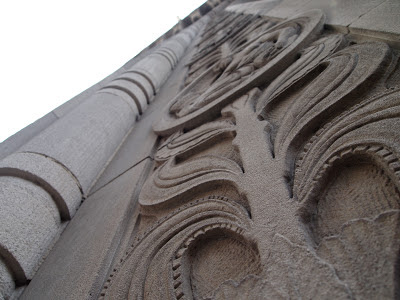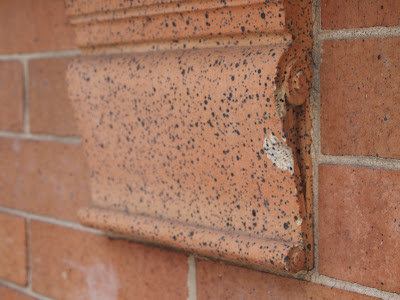“We arrange around us material forms which communicate to us what we need - but are at constant risk of forgetting we need... " Alain de Botton, The architecture of Happiness.
 |
| Acute ornamental deficiency |
If only the jetpack commuter of the 21st century
were a stunning reality today, then indeed, _Ornament and craft in our
surroundings could be regard with derision.
Yet, here we are - 2013, and we’re still confined to a sluggish
planar existence of sidewalks and streets. Fortunately, with increased
appreciation by designers and planners that a livable city is comprised of
suitable, dignified and pleasing pedestrian realms, it’s , therefore fiting at
this juncture to reconsider the visual austerity and monotony, which mid-century
architecture enfolded considerable portion of our pedestrian sphere. Adage such as; Less is More and Ornament is
Crime, inspired a reductive, even dehumanizing aesthetic which came to dominate
the “modernized” quarters of cities. To some extent, these conditions were and
remain, largely, a response to the preeminence of private automobiles and the difficulties
of storing so much steel and rubber; nonetheless, a renaissance of walkable cities
should herald a responsive architectonics suited to a bipedal creature which posssesses an
inherent penchant for stimulating environments.
 |
|
Even before permanent settlements or the concept of a built
environment, there’s been a longing to replicate aspects of the natural or
dream worlds in our surroundings.
|
 |
|
Alongside the Classical Orders, architectural aesthetics
have made extensive use of a variety of flora and fauna motifs. |
 |
|
No funtional application - a diminutive scroll pattern for the amusement of the keen
passersby
|








No comments:
Post a Comment